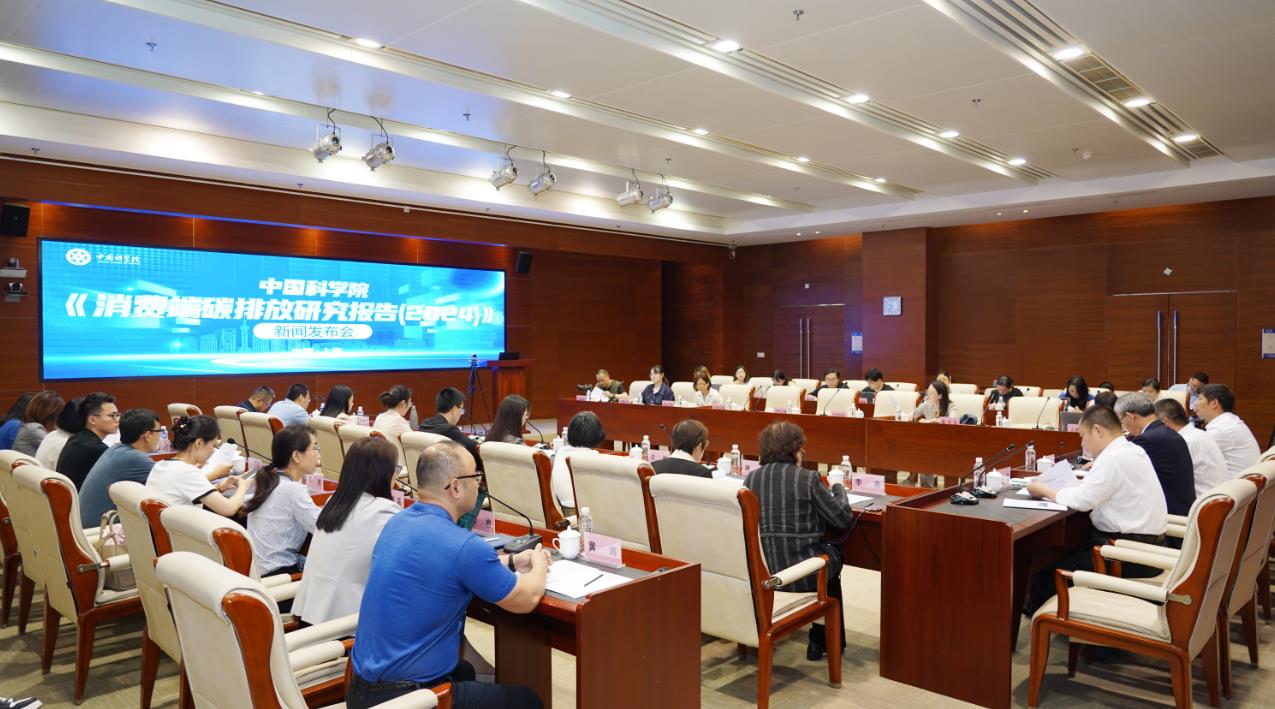China issues action plan for decarbonization, aiming to cut fossil fuel use, increase clean energy

A press briefing for the release of Research Report on Consumption-based Carbon Emissions (2024) held in Shanghai on May 29, 2024. Photo: Courtesy of Shanghai Advanced Research Institute, Chinese Academy of Sciences
China’s State Council on Wednesday unveiled a detailed action plan to cut carbon emissions in 2024 and 2025, with major goals in cutting fossil fuel consumption, increasing the use of clean energy and upgrading steel and other industries. The goal is to cut carbon dioxide emissions by about 130 million tons by the end of 2025.
The action plan represents China’s latest concrete efforts to reduce carbon emissions and promote green development, further underscoring the nation’s commitment to its “dual carbon” goals, in spite of rising protectionism overseas aimed at Chinese new-energy industries.
The plan aims to improve the regulation of the total amount and intensity of energy consumption, control fossil energy consumption, strengthen the management of carbon emission intensity, and implement special actions for energy conservation and carbon reduction in different fields and industries, so as to lay a solid foundation for achieving the goal of reaching peak carbon emissions and carbon neutrality.
Notably, the action plan aims to increase the share of non-fossil fuel energy consumption to about 18.9 percent in 2024 and about 20 percent in 2025. Energy-saving and carbon-reduction transformation in key areas and industries will result in the reduction of carbon dioxide emissions of approximately 130 million tons in 2024 and 2025, according to the plan.
Among the major tasks is to reduce the fossil-fuel energy consumption, including “strictly and rationally” controlling coal consumption and optimizing the consumption structure of oil and gas. Meanwhile, to increase the use of clean energy, the country will expand output and consumption of non-fossil fuel energy.
For the steel industry, China will strengthen the capacity and output of steel, and accelerate the industrial transition toward energy conservation and decarbonization. It is strictly prohibited to add new steel production capacity in the name of machining, casting, ferroalloy and other areas.
Significantly, the plan also includes major steps to reduce carbon emissions in the transport industry, with concrete plans for infrastructure upgrades and the promotion of new-energy vehicles. China will accelerate the elimination of old motor vehicles and tighten the energy consumption limits for operating vehicles, as well as gradually lifting restrictions on the purchase of new-energy vehicles in various regions.
The move comes as the US and the EU have taken protectionist moves against Chinese electric vehicles (EVs), with Washington imposing steep tariffs on Chinese EVs and Brussels launching a so-called anti-subsidy probe into Chinese EVs. Chinese officials and experts have slammed the moves as violating global trade rules and undermining global efforts to promote green development and tackle climate change.
China has been moving steadily to achieve its “dual carbon” goals – namely reaching peak carbon emissions by 2030 and carbon neutrality by 2060.
